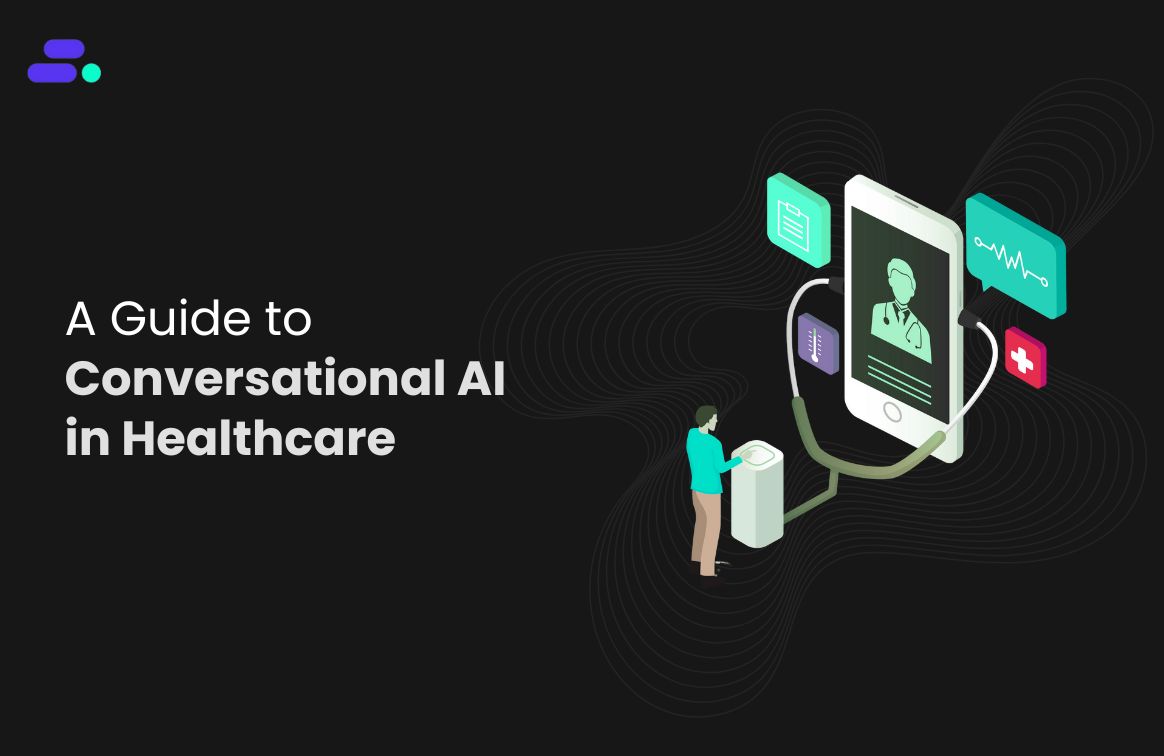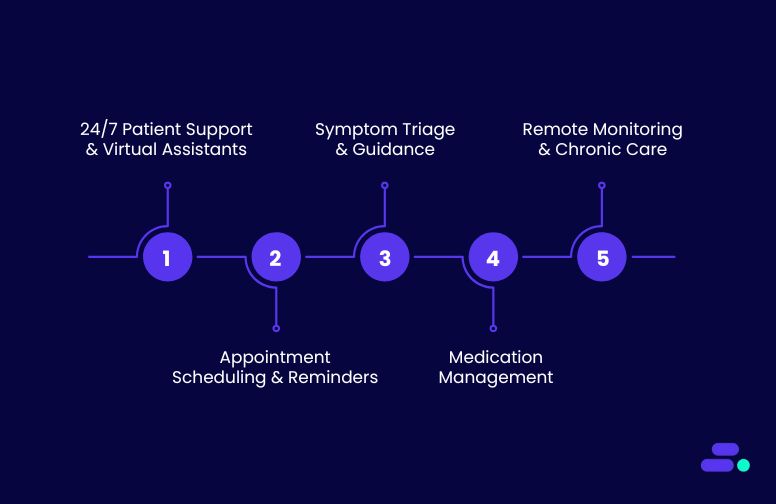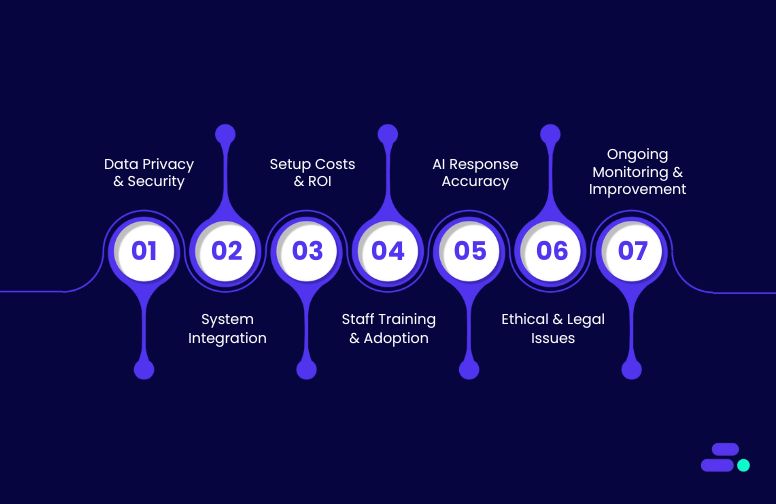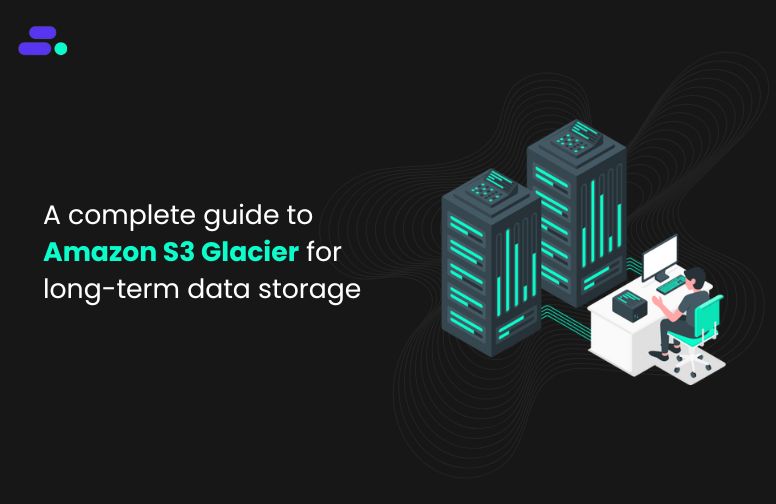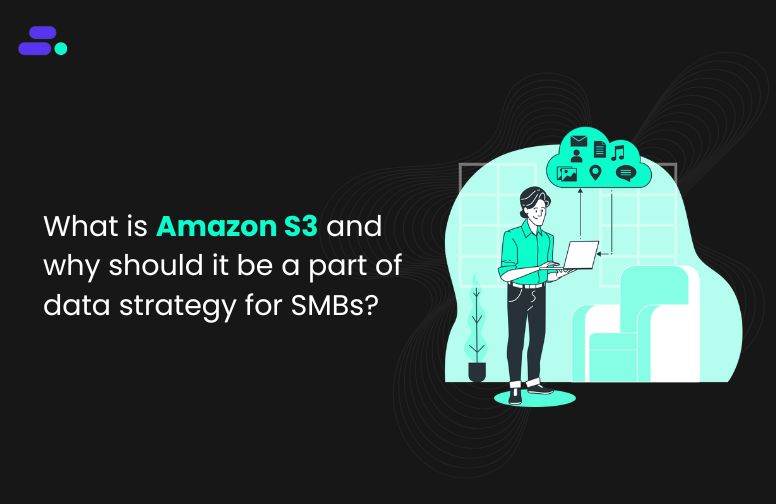This is a div block with a Webflow interaction that will be triggered when the heading is in the view.

Modernize your cloud. Maximize business impact.
For many small and medium-sized businesses (SMBs), managing invoices, receipts, and forms remains a time-consuming process that often leads to errors and inefficiencies. Manual data entry slows decision-making and diverts valuable resources away from strategic priorities.
Amazon Textract offers a smarter alternative. Automating data extraction enables SMBs to process documents faster, improve accuracy, and streamline operations.
This blog explores how SMBs can use Amazon Textract to simplify document management, enhance productivity, and focus on business growth.
Key takeaways:
- Amazon Textract automates text, forms, and table extraction, helping SMBs reduce manual data entry and errors.
- Synchronous vs asynchronous processing ensures scalable, real-time, or batch document automation for any workload.
- Post-processing, normalization, and storage in AWS services streamline workflows and maintain compliance.
- Human-in-the-loop with Amazon A2I improves accuracy and auditability for sensitive or low-confidence data.
- Cloudtech guides SMBs in end-to-end Textract deployment, workflow automation, and AI-driven document insights.
What is Amazon Textract? Key features explained
Amazon Textract is an AWS machine learning–based document analysis service that automates data extraction from scanned documents, PDFs, and images.
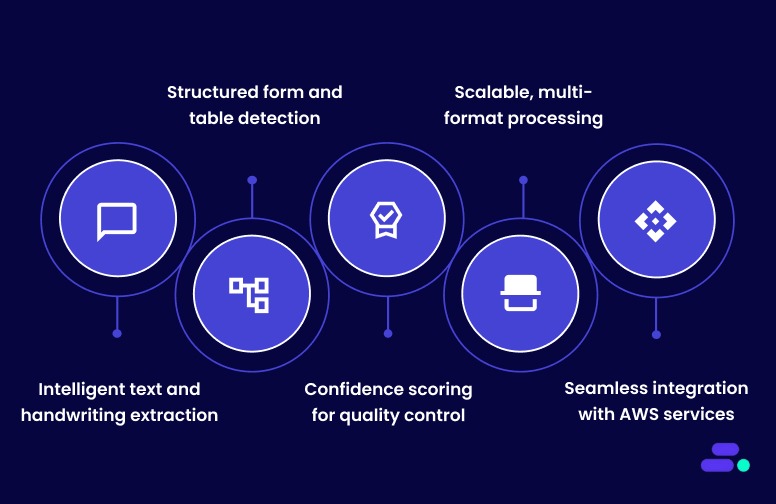
Unlike traditional optical character recognition (OCR) tools that only detect text, Amazon Textract understands document structure. It identifies tables, forms, and key-value pairs, making it ideal for SMBs handling invoices, patient records, or contracts.
Core features of Amazon Textract:
- Intelligent text and handwriting extraction: Amazon Textract accurately extracts both printed and handwritten text from scanned documents in multiple languages, ensuring no critical data is missed. It identifies text placement and layout context, making it effective for documents with complex formatting.
- Structured form and table detection: The service recognizes tables, fields, and key-value pairs such as “Invoice No: 1042” or “Patient Name: John Smith.” This preserves data relationships and outputs structured information for direct use in databases, ERP, or analytics platforms.
- Confidence scoring for quality control: Each extracted element is assigned a confidence score, allowing businesses to set validation thresholds. Combined with Amazon Augmented AI (A2I), Textract enables selective human review for high-stakes data, maintaining both speed and accuracy.
- Scalable, multi-format processing: Textract supports multiple file types (JPEG, PNG, PDF, TIFF) and can handle both single-page and multi-page documents. It scales automatically with AWS infrastructure, ideal for SMBs processing large document volumes without adding operational overhead.
- Seamless integration with AWS services: Textract works natively with Amazon S3, AWS Lambda, and AWS Glue to create end-to-end automated document workflows. This integration allows SMBs to streamline data extraction, transformation, and storage securely within the AWS ecosystem.
Amazon Textract enables SMBs to move from manual, error-prone data entry to fully automated, scalable document workflows. It empowers teams to extract, validate, and integrate data faster, improving accuracy, compliance, and overall productivity.
Suggested Read: Best practices for AWS resiliency: Building reliable clouds

Automating data extraction with Amazon Textract: An easy guide
Many SMBs are moving away from manual data entry toward automated document processing, and Amazon Textract is often at the center of that shift. By combining machine learning with intelligent document analysis, Textract helps businesses save time, reduce errors, and unlock data trapped in forms, invoices, and PDFs.
Pre-requisites of AWS Textract
Here are some prerequisites before starting:
- An AWS account with an IAM user or role that has AmazonTextractFullAccess (create a dedicated role for production).
- AWS CLI or SDK credentials configured (aws configure) or environment variables set.
- Install AWS SDK (Python example):
pip install boto3 - Documents in supported formats (JPEG, PNG, PDF, TIFF) and meeting quality guidelines (recommended ≥150 DPI, minimum text height ~15 px).
- For large or multi-page files, plan to use asynchronous APIs and store files in Amazon S3.
Here’s how businesses can easily implement Amazon Textract:
Step 1: Choose synchronous vs asynchronous processing
The first step is deciding how Amazon Textract will process documents, synchronously for quick, real-time extraction or asynchronously for handling large or multi-page files. This choice depends on workload size, latency needs, and document complexity.
- Synchronous (AnalyzeDocument): Best for single-page images or small PDFs (quick, real-time needs). File size limits apply (e.g., small images ≤ ~5 MB / single-page PDFs ≤ ~10 MB for sync).
- Asynchronous (StartDocumentAnalysis / StartDocumentTextDetection): Use for multi-page PDFs, large files, or batch processing. Requires the document to be placed in Amazon S3; results are retrieved via job IDs.
Rule of thumb: use sync for low-latency, single-page use cases; use async for bulk or multi-page jobs.
By selecting the right mode early, SMBs ensure efficient processing, with real-time insights for smaller documents or scalable batch automation for large volumes without performance bottlenecks.
Step 2: Prepare storage and permissions
Before running Amazon Textract, it’s essential to set up secure storage and access permissions. Documents and extracted data are stored in Amazon S3, while IAM roles define who can read, write, or manage them, ensuring a safe and compliant workflow.
- Create an S3 bucket to hold incoming documents and output (for async jobs).
- Ensure the Textract IAM role/user has read access to the S3 input bucket and write access if you store outputs.
- (Optional) Configure S3 lifecycle rules for long-term archiving (S3 Glacier) to control costs.
With properly configured S3 buckets and IAM permissions, SMBs create a secure, cost-efficient foundation for Textract operations, allowing smooth automation without data access issues or compliance risks.
Step 3: Basic API call (conceptual flow)
At this stage, businesses trigger Amazon Textract to extract data from documents using its APIs. Depending on the file type and processing mode, they can use synchronous calls for real-time results or asynchronous jobs for large or multi-page documents stored in Amazon S3.
Synchronous (single page):
- Read image bytes and call AnalyzeDocument with FeatureTypes set to ["TABLES", "FORMS"] or just text.
- Receive JSON Block objects containing PAGE, LINE, WORD, KEY_VALUE_SET, TABLE, CELL, etc.
- Parse JSON to extract text, key-value pairs, and table cells.
Asynchronous (multi-page / large files):
- Upload PDF/TIFF to S3.
- Call StartDocumentAnalysis (or StartDocumentTextDetection) specifying FeatureTypes = ["TABLES", "FORMS"].
- Poll GetDocumentAnalysis (or use SNS for notifications) until the job completes.
- Retrieve JSON Block objects, then parse and post-process.
By successfully executing the Textract API, SMBs gain structured JSON outputs containing detailed text, form fields, and table data, ready for transformation into usable formats such as CSV or databases for further automation.
Step 4: Interpreting Textract output
After running Amazon Textract, the service returns structured JSON output organized into “Block” objects that represent elements like text lines, tables, and form fields. Understanding these block relationships is key to reconstructing meaningful data, such as invoices, forms, and tables, accurately.
- Textract returns a list of Block objects. Common block types: PAGE, LINE, WORD, TABLE, CELL, KEY_VALUE_SET.
- Key-value pairs: link keys and values via relationships in the JSON; reconstruct programmatically to get InvoiceNumber → 12345.
- Tables: use TABLE + CELL blocks and their row/column relationships to rebuild CSV/Excel.
- Confidence scores: each block includes a confidence value; use thresholds to flag low-confidence items for review.
By parsing Textract’s output effectively, businesses can rebuild well-structured datasets (e.g., CSV or database entries) and apply confidence thresholds to flag uncertain results, ensuring data accuracy before it’s used for analytics or compliance reporting.
Step 5: Post-processing & storage
Once Textract completes extraction, the next step is post-processing—cleaning, validating, and storing the structured output. This involves normalizing data formats, applying business rules, and routing results to appropriate AWS storage or database services for long-term use and compliance retention.
- Convert extracted tables to CSV or JSON and store them in DynamoDB, RDS, or S3.
- Normalize fields (dates, currencies) and apply business rules (e.g., validate invoice numbers).
- Archive original documents and processed outputs for audit/compliance.
Example integrations: S3 (storage) → Lambda (event trigger) → Textract (analysis) → Lambda (parse & transform) → DynamoDB/Redshift (store).
Automated post-processing ensures that extracted data is accurate, searchable, and ready for downstream applications like analytics or billing. It also streamlines compliance by keeping both raw documents and processed results securely stored and easily auditable within the AWS ecosystem.
Step 6: Add quality control (human-in-the-loop)
Quality control ensures that extracted data meets accuracy and compliance standards. By leveraging confidence scores from Textract, SMBs can automatically process reliable data while flagging uncertain fields for human verification using Amazon A2I. This human-in-the-loop approach balances automation with accuracy.
- Use confidence thresholds to auto-accept high-confidence fields and route low-confidence items to human review.
- Integrate Amazon Augmented AI (A2I) to present small batches of low-confidence results to human reviewers and feed corrections back into workflows.
- Maintain audit logs of human edits for compliance.
Incorporating human review reduces errors, improves trust in automated workflows, and ensures regulatory compliance. SMBs can confidently process sensitive documents like invoices or medical forms while maintaining a clear audit trail of corrections and validations.
Step 7: Advanced options & ML augmentation
Advanced integration extends Textract beyond basic extraction. By combining it with Amazon Comprehend, SageMaker, or Step Functions, SMBs can perform entity recognition, sentiment analysis, domain-specific parsing, and orchestrate end-to-end automated workflows for more intelligent document processing.
- Combine Textract output with Amazon Comprehend for entity extraction, sentiment, or classification.
- Use Amazon SageMaker for custom models (e.g., specialized NLP or domain-specific table parsing) when Textract needs domain adaptation.
- Orchestrate workflows with Step Functions for long-running pipelines (upload → analyze → postprocess → human review → store).
These enhancements enable smarter, context-aware automation. SMBs can derive deeper insights, reduce manual intervention, and implement sophisticated, scalable document pipelines that adapt to specific business needs and complex data scenarios.
Following these steps lets SMBs automate document workflows end-to-end, extracting reliable data from invoices, forms, and records. It reduces manual effort, improves accuracy, and accelerates business processes while preserving auditability and compliance.

Common challenges when using Amazon Textract (and how to overcome them)
While Amazon Textract automates document data extraction, SMBs often encounter challenges related to document quality, format, parsing, scaling, and integration. Understanding these common issues and implementing practical solutions ensures smooth adoption, reliable results, and operational efficiency.
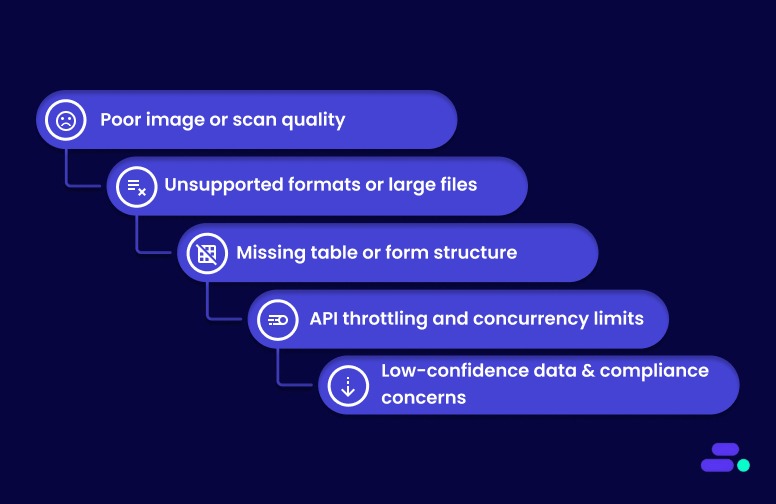
Here are some of the common challenges and their corresponding solutions:
1. Poor image or scan quality: Low-resolution, skewed, or low-contrast scans reduce extraction accuracy.
Solution: Preprocess documents with deskewing, denoising, and contrast enhancement. Enforce a minimum DPI of 150 for text clarity.
2. Unsupported formats or large files: XFA-based PDFs or very large multi-page documents may fail or require multiple retries.
Solution: Use asynchronous processing for large or multi-page files, and convert unsupported formats into standard PDFs or images (JPEG/PNG/TIFF).
3. Missing table or form structure: Tables and key-value relationships may not be detected correctly, affecting downstream workflows.
Solution: Verify parsing logic using the JSON Block relationships, and preprocess documents to improve layout clarity. Use async mode for complex, multi-page documents.
4. API throttling and concurrency limits: High-volume jobs can hit AWS API limits, causing delays or failures.
Solution: Implement batching, parallelism with SQS/Lambda, and exponential backoff for retries to stay within Textract service quotas.
5. Low-confidence data and compliance concerns
Challenge: Some extracted fields may be inaccurate, impacting business decisions or audits.
Solution: Apply confidence thresholds, route uncertain results through Amazon A2I for human validation, and maintain audit logs for compliance.
By proactively addressing these challenges, SMBs can maximize Textract’s accuracy, efficiency, and reliability. Proper preprocessing, intelligent workflow design, and human-in-the-loop validation ensure automated document extraction delivers real business value.
Also Read: AWS business continuity and disaster recovery plan

Troubleshooting and support for Amazon Textract
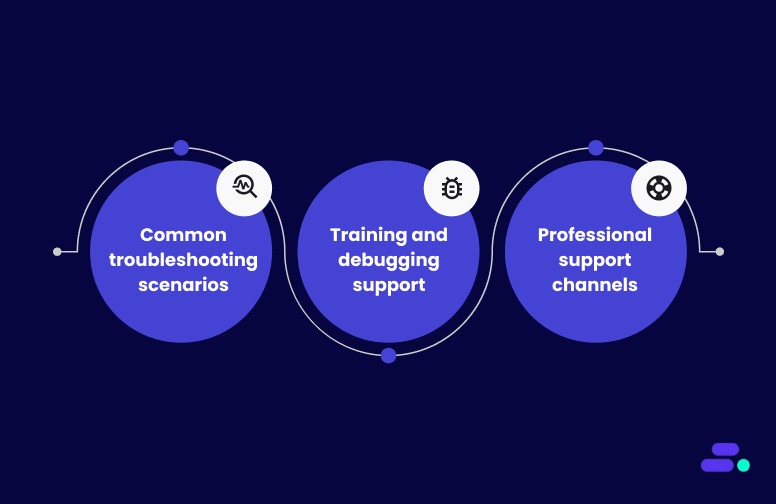
When challenges arise with Amazon Textract, a systematic approach to troubleshooting combined with access to AWS support resources can help resolve issues effectively.
1. Common troubleshooting scenarios
Businesses using Amazon Textract may encounter several recurring issues during implementation and daily operations. The most frequent challenges involve permissions, service limits, document quality, and integration with other AWS services. AWS provides detailed guidance and multiple support channels to help resolve these scenarios efficiently.
- IAM permission errors: Users often see "not authorized" errors when IAM policies are missing required permissions, such as textract:DetectDocumentText or textract:AnalyzeDocument. These issues are resolved by updating IAM policies to grant the necessary Amazon Textract actions.
- IAM: PassRole authorization failures: Errors related to IAM: PassRole occur when users lack permission to pass roles to Amazon Textract. Policies must be updated to allow the iam: PassRole action for relevant roles.
- S3 access issues: Insufficient permissions for S3 buckets, such as missing s3:GetObject, s3:ListBucket, or s3:GetBucketLocation, can prevent Amazon Textract from accessing documents. Ensure policies include these actions for the required buckets.
- Connection and throttling errors: Applications that exceed transaction per second (TPS) limits may encounter throttling or connection errors. AWS recommends implementing automatic retries with exponential backoff, typically up to five attempts, and requesting service quota increases as needed.
- Document quality and format problems: Amazon Textract performs best with high-contrast, clear documents in supported formats (JPEG, PNG, or text-based PDFs). If extraction fails or results are inaccurate, verify that documents are not image-based PDFs, are properly uploaded to S3, and meet quality guidelines.
2. Training and debugging support
Businesses using Amazon Textract have access to dedicated resources for troubleshooting and ongoing support. AWS provides both technical tools for debugging and multiple professional support channels to address operational or account-related issues.
- Validation files for custom queries: AWS generates validation files during training, helping users identify specific errors such as invalid manifest files, insufficient training documents, or cross-region Amazon S3 bucket issues.
- Detailed error descriptions: The system provides comprehensive error messages to pinpoint and resolve training dataset problems efficiently.
3. Professional support channels
Businesses using Amazon Textract have access to a range of professional support channels designed to address both technical and operational needs. These channels ensure users can resolve issues quickly, manage billing questions, and receive guidance on complex implementations.
- AWS Support Center: AWS offers multiple support channels for Amazon Textract users. For billing questions and account-related issues, users can contact the AWS Support Center.
- Technical assistance: For assistance with document accuracy issues, particularly with receipts, identification documents, or industrial diagrams, AWS provides direct email support through amazon-textract@amazon.com.
However, it is recommended to primarily use AWS Support Plans and AWS forums for technical assistance. - Enterprise and managed services: Organizations requiring enterprise-level support can access AWS Managed Services (AMS) for Amazon Textract provisioning and management. For custom pricing proposals and enterprise implementations, AWS provides dedicated sales consultation services through its partner contact forms.
Addressing common challenges lays the groundwork for a reliable deployment of Amazon Textract. Building on this foundation, following proven technical approaches and best practices helps maintain accuracy and performance over time.
Also Read: AWS business continuity and disaster recovery plan

For businesses seeking verified third-party consulting and implementation services, Cloudtech offers specialized Amazon Textract integration and optimization services to help maximize the document processing capabilities. Check out the pricing here!
Cloudtech's role in Amazon Textract implementation
Cloudtech, an AWS Advanced Tier Partner, specializes in cloud modernization and intelligent document processing for small and medium businesses. We deliver customized solutions to automate, optimize, and scale AWS environments, with a focus on document-centric workflows.
Cloudtech builds tailored workflows using Amazon Textract, helping businesses reduce manual effort, improve data accuracy, and speed up document processing.
- Data and application modernization: Upgrading data infrastructure and transforming legacy applications into scalable, cloud-native solutions.
- AWS cloud strategy and optimization: Delivering end-to-end AWS services, including cloud assessments, architecture design, and cost optimization.
- AI and automation: Implementing generative AI and intelligent automation to streamline business processes and boost efficiency.
- Infrastructure and resiliency: Building secure, high-availability cloud environments to support business continuity and regulatory compliance.
By combining automation, best practices, and deep AWS expertise, Cloudtech helps SMBs not just “move to the cloud,” but operate like cloud-native businesses, with infrastructure that’s secure, efficient, and ready to evolve with market demands.
See how other SMBs have modernized, scaled, and thrived with Cloudtech’s support →

Conclusion
Amazon Textract moves beyond traditional OCR by capturing not only text but also the structure and context within documents, enabling more accurate and actionable data extraction.
Understanding its capabilities and practical applications equips businesses to rethink document workflows and reduce the burden of manual processing. Whether handling forms, tables, or handwritten notes, Amazon Textract offers a reliable option to streamline operations and improve data accuracy.
For organizations seeking to implement or expand their use of this technology, Cloudtech offers expert guidance and support to ensure a smooth and effective deployment customized to business needs.
Reach out to Cloudtech to explore how Amazon Textract can be integrated into a business's cloud strategy.
FAQs
1. How does Amazon Textract's Custom Queries adapter auto-update feature work?
The auto-update feature automatically updates businesses' Custom Queries adapter whenever improvements are made to the pretrained Queries feature. This ensures their custom models are always up-to-date without manual intervention. Businesses can toggle this feature on or off during adapter creation, or update it later via the update_adapter API call.
2. What are the specific training requirements and limitations for Custom Queries adapters?
To create Custom Queries adapters, businesses must upload at least five training documents and five test documents. Businesses can upload a maximum of 2,500 training documents and 1,000 test documents. The training process involves annotating documents with queries and responses. Monthly training limits apply, and they can view these limits in the Service Quotas console.
3. How does Amazon Textract handle data retention, and what are the deletion policies?
Amazon Textract stores processed content only to provide and improve the service. Content is encrypted and stored in the AWS region where the service is used. They can request deletion of content through AWS Support, though it may affect the service's performance. Training content for Custom Queries adapters is deleted after training is complete.
4. What is the Amazon Textract Service Quota Calculator, and how does it help with capacity planning?
The Service Quota Calculator helps businesses estimate their quota requirements based on their workload, including the number of documents and pages. It provides recommended quota values and links to the Service Quotas console for increased requests, helping businesses plan their capacity more effectively.
5. How does Amazon Textract's VPC endpoint configuration work with AWS PrivateLink?
Amazon Textract supports private connectivity using interface VPC endpoints powered by AWS PrivateLink, ensuring secure communication without the public internet. Businesses can create VPC endpoints for standard or FIPS-compliant operations and apply endpoint policies to control access within their VPC environment.

Get started on your cloud modernization journey today!
Let Cloudtech build a modern AWS infrastructure that’s right for your business.
